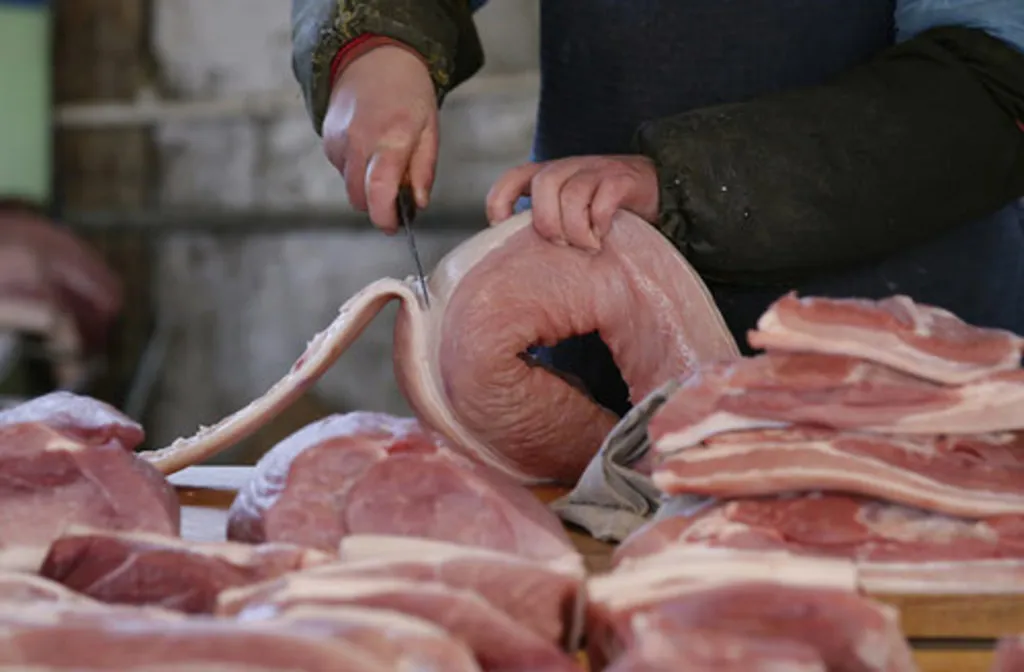 Society
Society

 |
| SafePORK seeks to reduce the burden of foodborne diseases in informal, emerging and niche markets.. — VNS Photo Tố Như |
{ "id": "6KNZ--0klc", "type": "myToolImages", "data": { "data": "" } }
HÀ NỘI — Simple and low-cost interventions can reduce the level of pork contamination in traditional markets, which helps solve food safety issues, the results of a SafePork 'Market-based approaches to improving pork safety in Việt Nam' project have shown.
SafePORK (2017-2023) is a project funded by the Australian Centre for International Agricultural Research (ACIAR) and co-implemented by the International Livestock Research Institute (ILRI), the Việt Nam National University of Agriculture (VNUA), the Hà Nội University of Public Health (HUPH), National Institute of Animal Sciences (NIAS) and University of Sydney.
“We are working with other programmes, such as One Health Initiative, to scale out this positive research outcome for the benefit of more people in other localities in Việt Nam,” said Nguyễn Việt Hùng, co-leader of the ILRI’s Animal-Human Health Program and leader of the ACIAR’s One Health Initiative.
In the agreement between ACIAR and the Ministry of Agriculture and Rural Development of Việt Nam for 2017-2027, food safety was identified as one of six priorities.
“Projects like SafePORK can provide policymakers and the public with scientific evidence that leads to actionable policy options to better manage food safety in the country,” said Dr Anna Okello, research programme manager for ACIAR livestock systems.
SafePORK seeks to reduce the burden of foodborne diseases in informal, emerging and niche markets.
It developed and evaluated simple interventions for improving food safety while safeguarding livelihoods in the Việt Nam pork sector.
At the workshop, the SafePORK team shared key findings and cost-effective and practical interventions to make pork safer along the smallholder pork value chain.
The interventions targeting traditional retail were effective in reducing microbial contamination in pork.
“The SafePORK team implemented simple interventions and developed the capacity to reduce the key pathogen of Salmonella,” said Fred Unger, the regional representative at ILRI in East and Southeast Asia.
“After the intervention, the prevalence of Salmonella on retailed pork has been decreased from 52 per cent to 24 per cent,” said Unger.
Phạm Đức Phúc, a SafePORK research team member from HUPH, said: “Pork is the most consumed meat in Việt Nam and Salmonella contamination of pork is high. On average, 1-2 in 10 people are at risk of contracting pork-borne salmonellosis annually.”
Salmonella is a prevalent foodborne disease. Most cases are mild, but it can be severe and affect anyone. Those most at risk are children under five, elderly aged 65 and above, pregnant women, and those with health issues.
According to research team, in Việt Nam, more than 80 per cent of pork is sold in traditional markets. The sale at the market is potentially spreading risks, and concerns about food safety are increasing.
As well as the potential risk of unhygienic food due to microbial contamination, many pork products in Việt Nam contain antibiotics, even chemicals that cause more harm to health than bacteria.
The team conducted surveys with pork smallholder value chain actors.
Seven key reasons were identified as the leading cause of unsafe pork: poor hygiene, improper preservation and processing techniques, long meat transportation duration, disease, unclear pork origin, and low-quality inputs.
The research team introduced an intervention package to improve hygienic practices. The package includes separating ready-to-eat pork, raw pork and intestines; and frequently washing surfaces, equipment and vendors’ hands.
An intervention package was also introduced at slaughterhouses.
This includes using stainless-steel grids to prevent carcasses from contacting the floor, frequent washing of hands and surfaces, and better separating clean and dirty zones to reduce carcass contamination further.
In the workshop, Shirley Tarawali, director general of ILRI, said that SafePORK's research and interventions had contributed significantly towards safer pork in Việt Nam while supporting many livelihoods.
These lessons and valuable insights will help achieve safer food systems for the country, and beyond, he added. — VNS